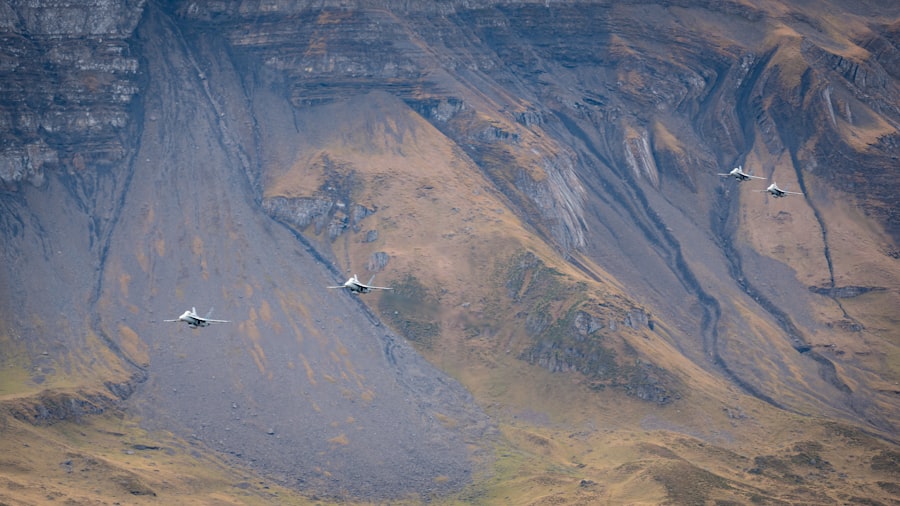The quest for speed in aviation has captivated the imagination of engineers, pilots, and enthusiasts alike for decades. The title of the fastest plane in the world is not merely a badge of honor; it represents the pinnacle of human ingenuity, technological advancement, and the relentless pursuit of breaking barriers. Speed in aviation is not just about reaching a destination faster; it embodies the spirit of exploration and the desire to push the limits of what is possible.
As we delve into the intricacies of this fascinating subject, we will explore the historical context, technological innovations, and future prospects that define the race for speed in aviation. The fastest plane in the world is a testament to the extraordinary capabilities of modern engineering and design. It serves as a symbol of human achievement, showcasing how far we have come since the Wright brothers first took to the skies.
The journey to create an aircraft that can travel at unprecedented speeds has been fraught with challenges, triumphs, and groundbreaking discoveries. Understanding this journey requires a look back at the history of aviation, the technological advancements that have shaped aircraft design, and the implications of speed on travel and society.
Key Takeaways
- The fastest plane in the world is a marvel of engineering and technology, capable of reaching incredible speeds.
- The quest for speed in aviation has a long and storied history, with many breakthroughs and advancements along the way.
- The design and technology behind the fastest plane involve cutting-edge materials, aerodynamics, and propulsion systems.
- Currently, the fastest plane in the world is the Lockheed SR-71 Blackbird, capable of reaching speeds over 2,000 miles per hour.
- The future of supersonic and hypersonic travel holds great promise for revolutionizing aviation and travel, with potential for faster and more efficient transportation.
History of the Quest for Speed
The history of aviation is replete with milestones that mark significant advancements in speed. The Wright brothers’ first powered flight in 1903 was just the beginning. As aviation technology evolved through the decades, so did the ambition to fly faster.
The 1920s and 1930s saw a surge in interest in speed records, with aircraft like the Supermarine S.6B and the Hughes H-1 Racer pushing boundaries. These early attempts laid the groundwork for future innovations, as engineers began to understand the principles of aerodynamics and propulsion. World War II accelerated advancements in aircraft design, as nations sought to develop faster and more powerful military planes.
The introduction of jet engines marked a turning point in aviation history. The Messerschmitt Me 262 became the world’s first operational jet fighter, achieving speeds that were previously unimaginable. Following the war, commercial aviation began to take off, and with it came a renewed focus on speed.
The introduction of the Boeing 707 and Concorde in the 1960s represented a significant leap forward, as these aircraft could travel at supersonic speeds, drastically reducing travel times across continents.
The Design and Technology Behind the Fastest Plane

The design and technology behind the fastest plane in the world are a culmination of decades of research and development in aerodynamics, materials science, and propulsion systems. At its core, achieving high speeds requires an understanding of how air interacts with an aircraft’s surface. Engineers employ advanced computational fluid dynamics (CFD) simulations to analyze airflow patterns around an aircraft, allowing them to optimize shapes for minimal drag and maximum lift.
Materials play a crucial role in high-speed flight as well. Traditional aluminum structures are often replaced with advanced composites and titanium alloys that can withstand extreme temperatures and pressures encountered at high velocities. For instance, the use of carbon-fiber-reinforced polymers has become increasingly common due to their lightweight yet strong properties.
Additionally, thermal protection systems are essential for safeguarding sensitive components from the intense heat generated during supersonic and hypersonic flight. Propulsion technology has also seen remarkable advancements. Turbojet engines were once the standard for high-speed flight, but modern aircraft often utilize turbofan engines that offer improved efficiency and thrust.
For hypersonic travel—defined as speeds exceeding Mach 5—scramjet (supersonic combustion ramjet) technology is being explored. Scramjets operate by compressing incoming air before combustion occurs, allowing for sustained flight at extreme speeds without the need for traditional jet engines.
The Current Fastest Plane in the World
| Attribute | Value |
|---|---|
| Name | Lockheed Martin SR-71 Blackbird |
| Top Speed | 3,540 km/h (2,200 mph) |
| Maximum Altitude | 85,000 feet (25,900 meters) |
| First Flight | 1964 |
| Manufacturer | Lockheed Corporation |
As of now, the title of the fastest plane in the world is held by the North American X-15, a rocket-powered aircraft that achieved a maximum speed of Mach 6.72 (approximately 4,520 miles per hour) during its test flights in the 1960s. The X-15 was part of a joint program between NASA and the U.S. Air Force aimed at exploring high-altitude and high-speed flight.
Its design featured a sleek fuselage and wings optimized for aerodynamic efficiency at extreme speeds. The X-15’s achievements were groundbreaking not only for their speed but also for their contributions to our understanding of aerodynamics and space travel. Pilots like Neil Armstrong and Chuck Yeager flew this remarkable aircraft, gathering invaluable data that would inform future aerospace endeavors.
The X-15 program provided insights into flight dynamics at hypersonic speeds, paving the way for subsequent projects like the Space Shuttle and various experimental vehicles designed for space exploration. While no operational aircraft currently matches the X-15’s speed record, several contenders are on the horizon. The Boeing X-43A, an experimental scramjet vehicle, achieved speeds of Mach 9.6 during its test flights in 2004, showcasing the potential for hypersonic travel.
However, it is important to note that these experimental vehicles are not designed for commercial use but rather serve as platforms for research and development.
The Future of Supersonic and Hypersonic Travel
The future of supersonic and hypersonic travel holds immense promise as researchers and companies invest in developing technologies that could revolutionize air travel. Supersonic commercial flight has seen a resurgence in interest with companies like Boom Supersonic working on aircraft such as Overture, which aims to carry passengers at speeds exceeding Mach 1.7 while minimizing noise pollution through innovative design features like a “quiet supersonic” profile. Hypersonic travel is also gaining traction as nations explore its military applications and potential for rapid global transportation.
The development of hypersonic missiles has prompted increased investment in research aimed at creating passenger-carrying hypersonic vehicles. Companies like Hermeus are working on designs that could enable commercial flights at speeds exceeding Mach 5, drastically reducing travel times between major cities around the world. However, achieving practical hypersonic travel presents significant challenges related to safety, regulatory frameworks, and infrastructure development.
As these technologies advance, collaboration between governments, private companies, and research institutions will be essential to address these hurdles effectively.
The Impact of Speed on Aviation and Travel

The impact of speed on aviation extends beyond mere convenience; it reshapes global connectivity and economic dynamics. Faster air travel can significantly reduce journey times between cities, making it feasible for business meetings or short trips that were once impractical due to lengthy travel durations. This increased accessibility can stimulate economic growth by facilitating trade and tourism.
Moreover, speed influences passenger expectations and experiences. As travelers become accustomed to faster flights, they may demand more efficient services from airlines. This shift could lead to innovations in airport design, boarding processes, and overall customer service as airlines strive to meet evolving consumer preferences.
However, with increased speed comes heightened responsibility regarding environmental concerns. The aviation industry is under pressure to reduce its carbon footprint while accommodating growing passenger numbers. As supersonic and hypersonic technologies develop, addressing their environmental impact will be crucial to ensuring sustainable growth in air travel.
Challenges and Limitations of Building Faster Planes
Despite significant advancements in technology, building faster planes presents numerous challenges that engineers must navigate carefully. One major hurdle is overcoming sonic booms associated with supersonic flight. When an aircraft exceeds the speed of sound, it generates shockwaves that can produce disruptive noise on the ground.
Regulatory bodies have imposed restrictions on supersonic flights over land due to these concerns, limiting commercial viability. Additionally, safety remains a paramount concern when designing high-speed aircraft. The structural integrity of materials must be rigorously tested to withstand extreme conditions encountered during flight.
Engineers must also consider emergency protocols for high-speed scenarios where traditional landing techniques may not suffice. Funding is another critical factor influencing research into faster planes. Developing cutting-edge technologies requires substantial investment from both public and private sectors.
As competition intensifies among aerospace companies seeking to pioneer new advancements, securing financial backing becomes increasingly vital.
The Race for Speed in Aviation
The race for speed in aviation continues to inspire innovation and challenge our understanding of what is possible in air travel. From early pioneers who dared to dream of flying faster than ever before to modern engineers pushing boundaries with advanced technologies, each step forward represents a collective effort to redefine our relationship with flight. As we look ahead to a future where supersonic and hypersonic travel may become commonplace, it is essential to balance ambition with responsibility—ensuring that progress does not come at the expense of safety or sustainability.
The journey toward achieving unprecedented speeds will undoubtedly shape not only how we travel but also how we connect with one another across vast distances. As we stand on the brink of a new era in aviation history, one thing remains clear: the pursuit of speed will continue to drive innovation and inspire generations to come.


